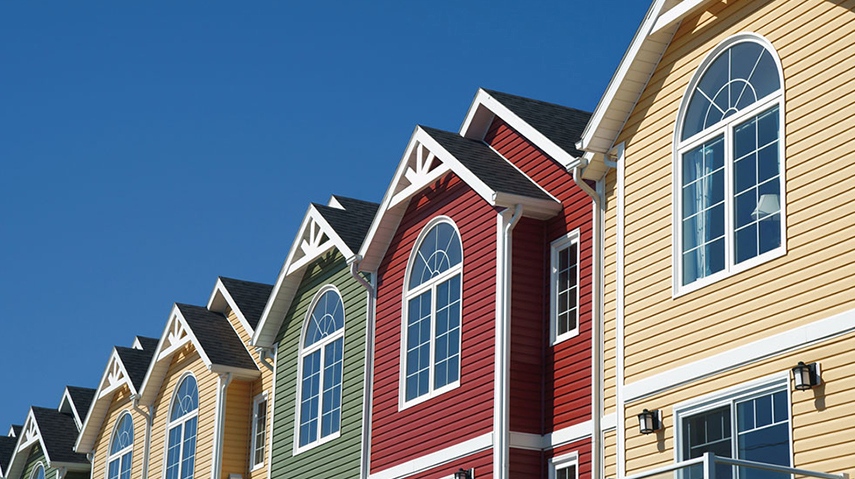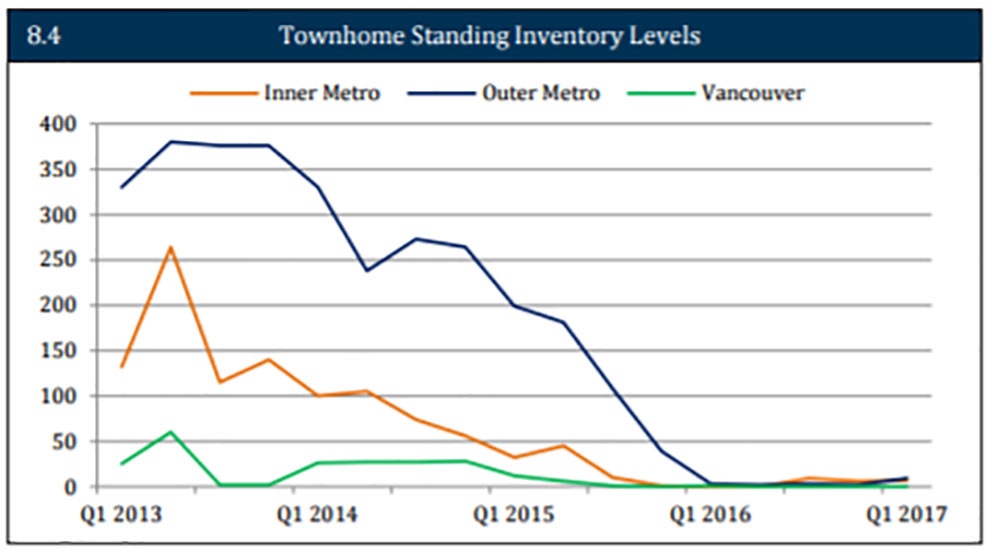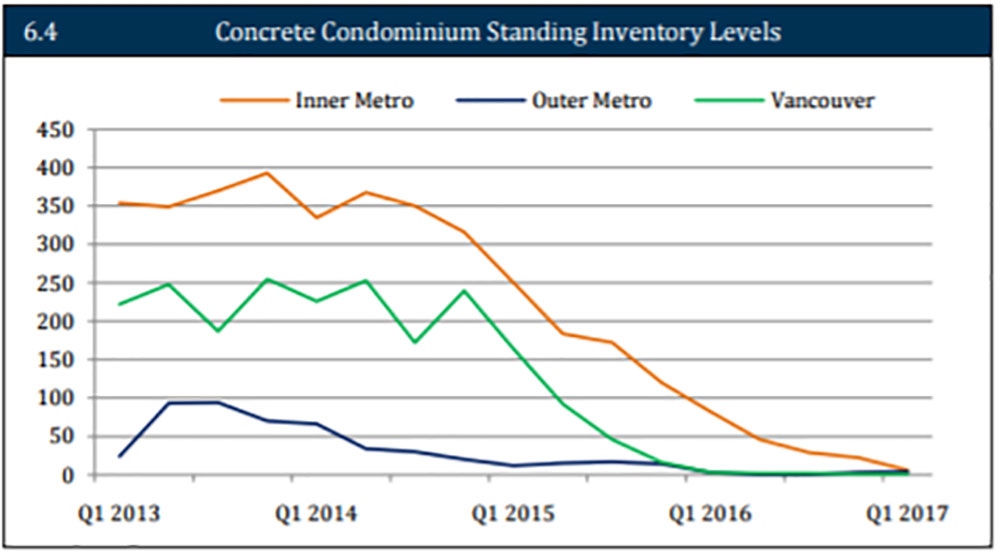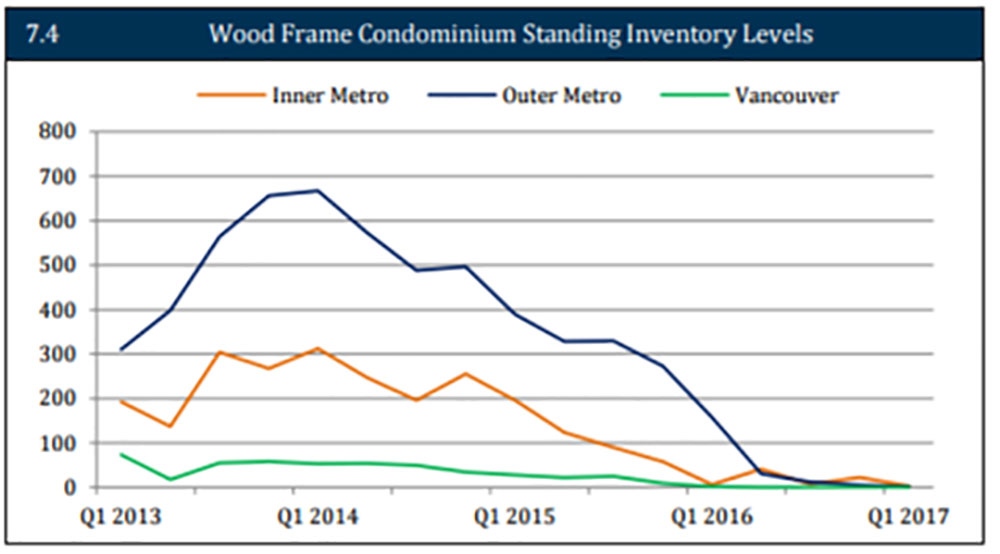Region?s Stock of Move-In-Ready New Homes ?Falls Off a Cliff?
Joannah Connolly
REW

Inventory of completed, unsold new multi-family homes plummets to almost zero, with not one finished townhouse available in Vancouver proper, says report

New concrete condos told a similar story, with standing inventory reaching a record low of 11 units in the first quarter of 2017 ? compared with more than 700 units in Q4 2013

Standing inventory of new, unsold wood-frame condominiums also hit all-time lows, at just four units across the whole of Metro Vancouver. This is down from 164 units in the same quarter last year and down from around 1,000 units in Q1 2014

The available stock of new multi-family homes that are finished and unsold has “fallen off a cliff” and is now at record lows, according to a report issued May 29 by the Urban Development Institute (UDI) Pacific Region.
UDI’s first-quarter State of the Market 2017 Research Report, prepared by research group Urban Analytics, examines the supply of new housing – including housing starts, inventory (available units that are built or under construction) and standing inventory (completed and unsold units) – across Metro Vancouver.
It found that townhomes are extremely scarce, with zero completed units available for purchase in Vancouver proper, only seven new townhouses available in the Inner Metro region, and nine in the Outer Metro region.
The report said that housing starts are not a good measurement of supply, because at least 80% of these are pre-sold before they’re built to meet financing requirements. “While pre-sales in various forms of construction were available for purchase as part of overall ‘inventory’, that doesn’t help someone who’s just moved here for a new job with a family, and needs a new home today,” observed the UDI.
Anne McMullin, UDI president and CEO, said, “What’s causing the supply shortage is the restrictive single-family home neighborhood zoning on 85% of our residential land base, available to a select few high income earners who can buy there. That keeps out young families, middle income earners and renters, who can’t afford single-family homes.
“We clearly need a regional housing strategy with more homes for more people,” she added. “That means more high-rise apartments along rapid transit corridors and more townhomes, rowhomes, multi-family low-rises, duplexes and laneway homes in traditional single-family neighborhoods.”
However, not everyone agrees that increasing supply will help ease housing shortages. Frank O’Brien, editor of REW.ca’s sister newspaper Western Investor, said on the Real Estate Therapist radio show on the May 20 edition, “We cannot build enough supply to match demand from speculators, offshore and domestic. If you build more and more higher-density housing, you’ll just drive up the price of land. Look at Hong Kong – it has densities that would give Vancouverites heart attacks, but it has among the highest real estate prices in the world. The only way to reduce home prices is to ease demand – and you can’t ease demand. Vancouver’s high real estate prices will continue.”
© 2017 REW.ca
